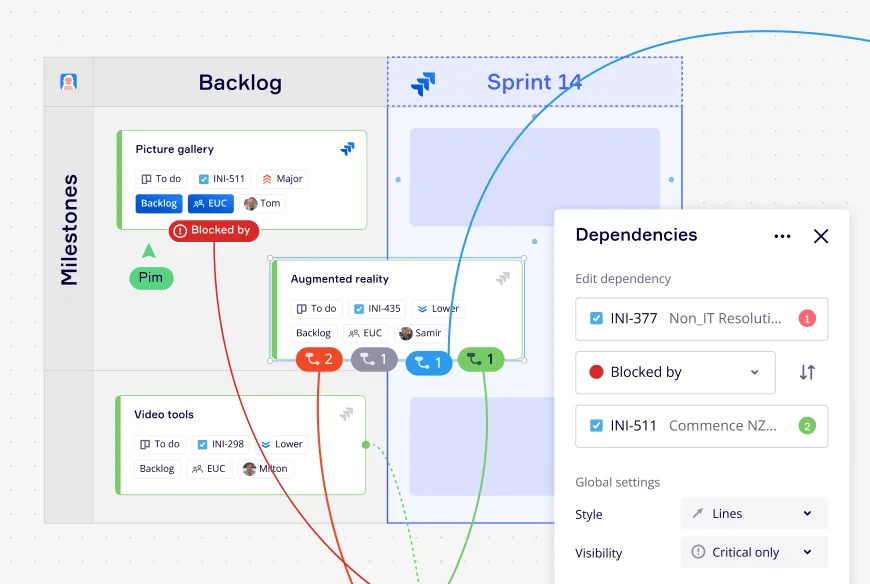
Table of contents
Table of contents
What is continuous product design?

Definition of continuous product design
Continuous product design is an iterative and customer-centric approach to product development. It involves constantly gathering user feedback, analyzing data, and making incremental improvements to the product throughout its lifecycle. This methodology prioritizes adaptability and learning from real-world usage, ensuring the product remains relevant and aligned with customer needs.
Continuous product design and its customer-centric approach
Continuous product design employs an iterative process, where each product version is an improvement over the previous one based on user insights. The customer remains at the core of decision-making, and the product evolves to cater to their evolving preferences and pain points. This approach enables a strong product-market fit and drives customer loyalty.
Benefits of continuous product design
Rapid iteration and faster time-to-market
By rapidly iterating and incorporating user feedback, continuous product design shortens development cycles. This agility enables companies to bring new features and updates to market quickly, gaining an edge over competitors and capturing early adopters.
Enhanced customer satisfaction and product-market fit
Continuous product design emphasizes meeting customer needs, resulting in products that better align with user expectations. When we achieve a good product-market fit the customer satisfaction, loyalty, and positive word-of-mouth naturally follow.
Data-driven decision making and performance optimization
Data-driven insights obtained through continuous product design empower teams to make informed decisions. By leveraging analytics and A/B testing, organizations can optimize product performance, identify pain points, and implement improvements that resonate with users.
Increased adaptability to changing market demands
Continuous product design enables companies to adapt swiftly to market changes, emerging trends, and competitive challenges. It fosters a culture of learning and flexibility, allowing businesses to respond proactively to evolving customer preferences and industry shifts.
Adopting an interactive process of developing the product design, organizations can unlock their innovation potential, deliver superior products, and establish a customer-centric culture that drives long-term success.
Key teams involved in the iterative process of product design
Product development and design teams
These teams are responsible for turning ideas into tangible products.Continuous product design approach allows them to collaborate closely with customers, analyze their feedback, gather stakeholders' opinion, and iteratively improve product features to ensure optimal usability and functionality.
Customer support and feedback teams
These teams serve as a critical bridge between customers and product development. By actively collecting and analyzing user feedback, they provide valuable insights to shape product enhancements and address customer pain points effectively.
Marketing and sales teams
Marketing and sales teams play a pivotal role in understanding customer needs and preferences. By aligning their strategies with continuous product design, they can communicate product improvements effectively, driving customer engagement and conversion.
Cross-functional collaboration for holistic product improvement:
Collaboration among all key teams is vital for successful continuous product design. By breaking down silos and fostering open communication, companies can leverage diverse expertise to deliver a cohesive product experience that meets customer expectations.
Ensuring a continuous product design process
Gathering user feedback and conducting user research
Continuous product design starts with understanding user needs and pain points. Regularly collecting feedback, conducting user research, and monitoring user behavior provide valuable insights for iterative improvements.
Emphasizing data analytics and A/B testing
Data-driven decision making is integral to continuous product design. Leveraging data analytics and conducting A/B tests help validate hypotheses, identify trends, and optimize product features based on real user interactions.
Implementing agile development and devops practices
Adopting agile development methodologies allows teams to work in iterative cycles and respond quickly to changing requirements. Integration of DevOps practices streamlines product development, facilitating seamless collaboration and efficient delivery.
Establishing a culture of learning and adaptation
Continuous product design requires a culture that embraces change and values ongoing learning. Encouraging experimentation, celebrating both successes and failures, and fostering a growth mindset are essential for sustaining innovation.
Nurturing innovation through continuous product design
Continuous product design is a vital strategy for companies seeking sustainable growth and innovation. By prioritizing customer feedback, fostering collaboration across teams, and emphasizing data-driven decision making, organizations can create products that evolve with market demands and customer expectations.